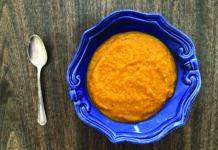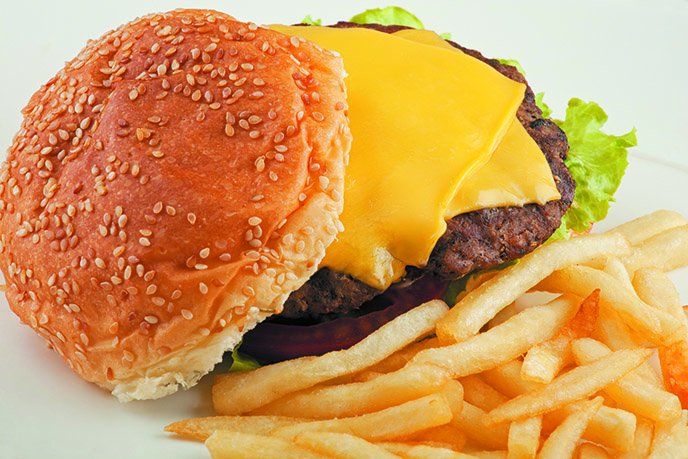Image: Thinkstock

Making healthy choices at fast-food restaurants remains a challenge, according to new Tufts research, but—contrary to some perceptions—it has not gotten worse. Levels of dangerous trans fats in fries have actually improved, while portion sizes, calories, sodium and saturated fat changed little between 1996 and 2013.
“There is a perception that restaurants have significantly expanded their portion sizes over the years, but the fast food we assessed does not appear to be part of that trend,” says Alice H. Lichtenstein, DSc, director of Tufts’ HNRCA Cardiovascular Nutrition Laboratory. “Our analysis indicates relative consistency in the quantities of calories, saturated fat and sodium. However, the variability among chains is considerable and the levels are high for most of the individual menu items assessed, particularly for items frequently sold together as a meal, pushing the limits of what we should be eating to maintain a healthy weight and sodium intake.”
In two studies published in Preventing Chronic Disease, Lichtenstein and colleagues analyzed different sizes of popular offerings at three national fast-food chains over a 17-year span: fries, cheeseburgers, grilled-chicken sandwiches and regular colas. Such menu choices are important, she notes, because more than a third of the food Americans eat comes from such “away-from-home” sources—and 40% of that is purchased at fast-food chains.
LITTLE WIGGLE ROOM: Among the three chains, calories in a large cheeseburger meal, with fries and a regular cola, ranged from 1,144 to 1,757. That adds up to 57% to 88% of the approximately 2,000 calories most people should eat per day. Lichtenstein says, “That does not leave much wiggle room for the rest of the day.”
Sodium levels were also high. In 2013, the cheeseburger meal totaled 63% to 91% of the maximum 2,300 milligrams of daily sodium recommended by the Dietary Guidelines for Americans. Depending on the chain, between 1996 and 2013, eating just a single four-ounce cheeseburger could have accounted for 1,100 to 1,450 milligrams of daily sodium.
The only healthy trend was found in fries, which decreased first in saturated fat in 2001 and then trans fat, likely due to changes to the frying fat. “The decline in trans fat we saw between 2005 and 2009 appears to be related to legislative efforts,” Lichtenstein says. “The success of New York City’s trans fat ban and others like it suggest it is worth pursuing these types of approaches because they make the default option the healthier option. Of course, it is important to note that the healthier option in terms of fat does not translate into lower calories or less salt.”
CHOOSE YOUR CHAIN: Paying attention to nutrition data, which the FDA will require to be posted at larger restaurant chains by year’s end, can help you make healthier choices. The researchers reported that nutrient content varied among similar items from different chains. For example, an order of small fries could differ by as much as 110 calories and 320 milligrams of sodium from chain to chain. “That difference can cause a yearly 10 pound increase in body weight, if there is no compensation,” says Lichtenstein.
“Simple advice to individuals—to always order the small portion, for example—may not necessarily have the intended effect,” she goes on. “That’s because the small size of an item in one fast-food outlet likely differs significantly from the small size of the same item in another fast-food outlet, whether we’re talking about sodium content or calories.”
It pays to comparison-shop for healthier menu items, she adds. “Use the nutritional information that’s available. There may be three fast-food places that are relatively close to work or home. Do a one-time comparison for that item that you normally order. See how much sodium or how many calories are in that item at each restaurant. What we found is that there is a wide range, so settle on the venue that provides fewer calories or lower sodium.”
In addition to comparing the nutrition numbers for your usual order across fast-food chains, consider changing your choices. That doesnt necessarily mean substituting a salad for a cheeseburger, since dressings, cheese and other add-ons can turn healthy lettuce into a high-calorie feast. But try some of these simple switches, based on numbers from the most popular fast-food chains:
– Instead of a quarter-pound cheeseburger, order a regular hamburger (no cheese): Saves 280 calories, 9 grams saturated fat, 1.5 grams trans fat, 630 milligrams sodium.
– Instead of a salad topped with crispy fried chicken, order it with grilled chicken: Saves 160 calories, 2 grams saturated fat, 170 milligrams sodium.
– Instead of a fried-fish sandwich, order a veggie burger: Saves 110 calories, 2 grams saturated fat, 330 milligrams sodium.
– Instead of a sausage and cheese breakfast muffin, order oatmeal with maple and fruit: Saves 10 calories, 3.5 grams saturated fat, 590 milligrams sodium.
– Instead of a caramel mocha coffee drink, order a regular coffee (add artificial sweetener and low-fat creamer if desired): Saves up to 320 calories, 7 grams saturated fat, 170 milligrams sodium.
Always be on the lookout for new healthier options that are being added to the menus, advises Tufts Lichtenstein. The landscape of fast-food chains is changing. The more consumers embrace them, the more variety we will see.




















